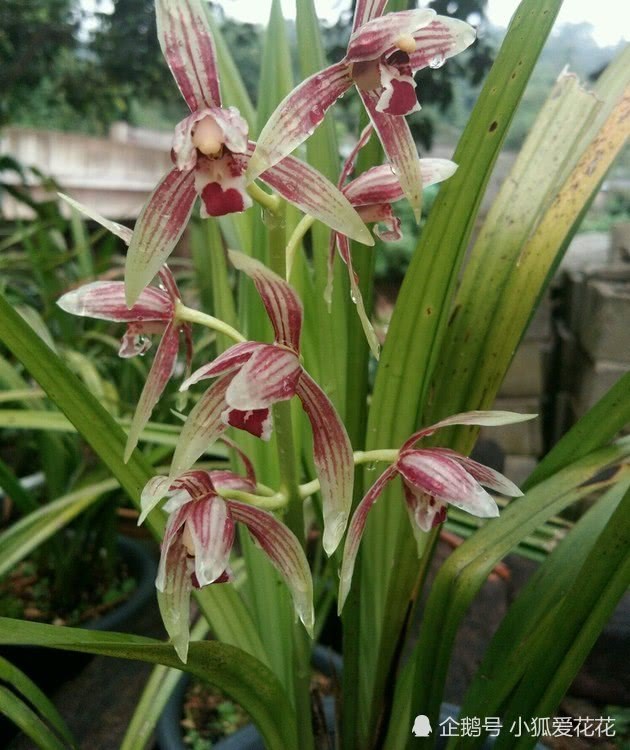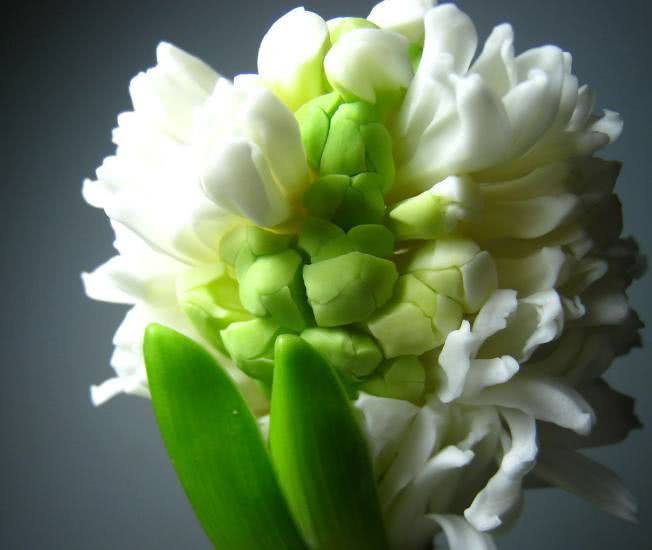Raising orchids needs to know that these four methods can save it at the critical moment.

Orchids are no stranger to everyone, but it is strange that if there is a disease, I do not know how to deal with it, which is a big problem. Under the premise of solving the disease, we still need a pair of observation eyes, which can timely find out whether the orchid is healthy or unhealthy. By raising orchids and mastering these four "functions", we will be able to identify what disease the orchids are suffering from and save it at a critical moment.
The first method: look at the spots
In the early stage of the withered leaves of orchids, there may be a little spot at the tip of the leaf and at the front of the leaf. Over time, you will find that there are more and more spots, which are grayish brown. At this time, the whole leaf will die. What should I do about this?
Need to strengthen ventilation, the distance between flowerpots is not too close, it is best to replace the new soil, the new soil with high temperature antivirus. Cut off the leaves that are already sick so that the other leaves will not suffer. At the initial stage of the disease, Bordeaux liquid can be sprayed once in 8 days. If it has reached more than the middle stage, use carbendazim spraying to control the disease.
The second method: look at irregular spots
If there are some round, semicircular and various shaped spots on the leaves, they are suffering from anthrax and measures need to be taken at this time. First of all, all the sick leaves should be cleaned up, and then some corresponding drugs should be sprayed.
The third method: look at the focal tip of the blade
In general, the leaf coke tip is caused by excessive fertilization or inappropriate materials, its solution is very simple, only need to cut off the charred part, fertilizer and water, do not apply thick fertilizer, can use orchid special nutrient solution for conditioning, spray once in ten days or so. Coconut bran soil can be used for the material and disinfect it before use to avoid carrying bacteria. Then spray carbendazim regularly, once every 8 days or so.
The fourth method: watch the leaves turn black.
The blackening of the leaves means that there will be purplish black on the leaves, but when turned over, the back is green, which may be caused by the lack of phosphate fertilizer. Since it is caused by the lack of phosphate fertilizer, corresponding measures should be taken. Move the flowerpot to a warmer environment to supplement phosphate fertilizer, if not, you can only turn the pot to check if there are rotten roots.
If you have rotten roots, you need to clean up all the rotten roots, then wash the orchids with clean water, soak them in a basin filled with potassium permanganate solution for about 25 minutes, take them out, and apply plant ash to the wound to prevent infection.
The editor warmly reminds flower friends that they should pay attention to ventilation, do not always put orchids in poorly ventilated rooms, and do not apply too much fertilizer, and the choice of organic fertilizer is conducive to the growth of orchids.
If you water it, water it as soon as it is dry. You can't water a lot of water at once for convenience, so as not to rot the roots. Once again, if you raise orchids and master these four "functions", you will be able to identify what diseases the orchids suffer from.
- Prev

The hottest interview topic on the street is the girl's answer that makes people laugh and would rather drink urine than water?
The hottest interview topic on the street, the girl replied that it made people laugh, would you rather drink urine than water? Recently, street interview videos are becoming more and more popular, whether on Douyin or other types of street interviews.
- Next

The flower shape of this plant is very beautiful after such a twists and turns, whether it is soil culture or hydroponic culture.
Hyacinth is prone to yellow rot when it is hot and humid. At the onset of the disease, the leaf tip begins to expand into spots, then becomes brown and necrotic, the bulb heart decays, and the mucus turns yellow. Disease-free ball was selected for prevention and control, and 1000-fold solution of agricultural streptomycin was sprayed regularly. ...
Related
- Wuhan Hospital Iron Tree Blooming Result Was Instantly Frightened by the Gardener Master
- Which variety of camellia is the most fragrant and best? Which one do you like best?
- What is the small blue coat, the breeding methods and matters needing attention of the succulent plant
- Dormancy time and maintenance management of succulent plants during dormancy
- Minas succulent how to raise, Minas succulent plant pictures
- What are the varieties of winter succulent plants
- How to raise succulent plants in twelve rolls? let's take a look at some experience of breeding twelve rolls.
- Attention should be paid to water control for succulent plants during dormant period (winter and summer)
- Watering experience of twelve rolls of succulent plants
- Techniques for fertilizing succulent plants. An article will let you know how to fertilize succulent plants.

